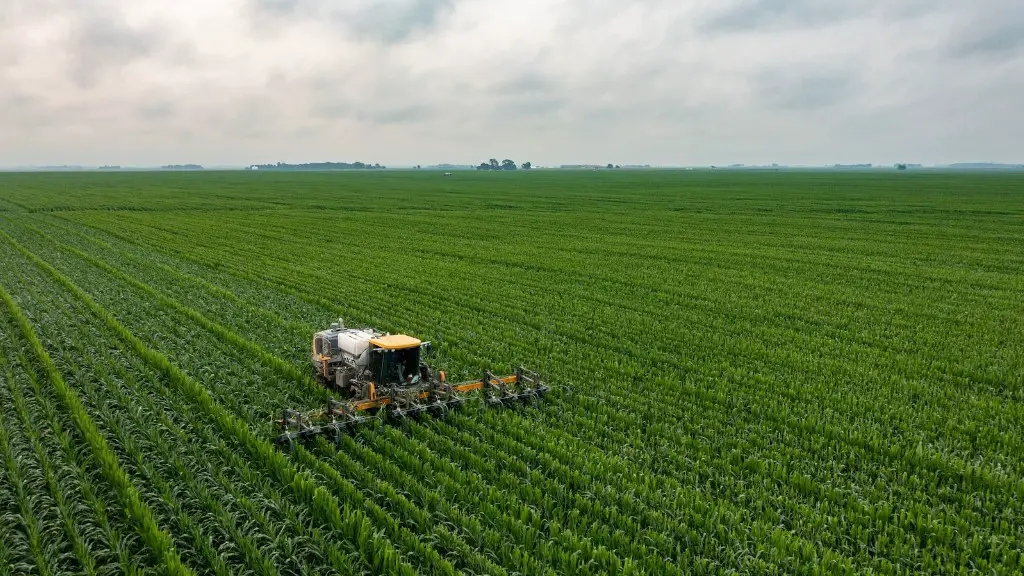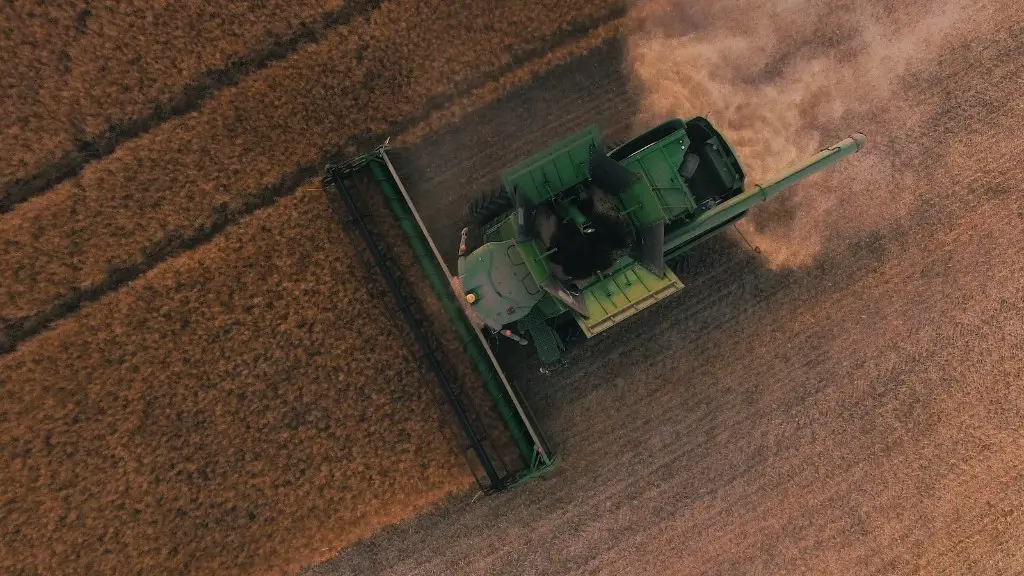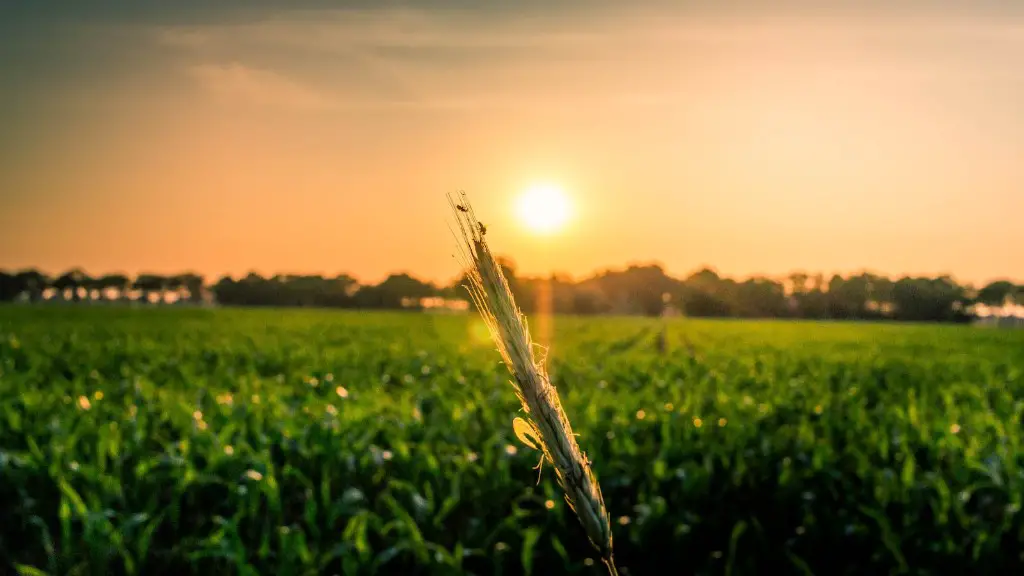Radioisotopes are a useful tool in the development of more efficient agricultural practices. They can be used to monitor and diagnose soil fertility and soil moisture levels, as well as to measure other environmental parameters such as air quality, water quality and heavy metal concentrations. In addition, they can also be used to trace sources of water, making it possible to target specific areas where improvements in soil fertility are necessary. Moreover, radioisotopes can be used to help identify beneficial biological agents in plants, enabling the timely application of plant nutrients and pest control measures.
In certain agricultural applications, radioisotopes can also be used to stimulate crop growth. This is particularly useful for large-scale crop production, where the use of fertilisers or other chemicals becomes impractical or costly. Radioisotopes can also help monitor soil fertility and moisture levels, as well as to analyse the effects of nutrient availability on crop growth. Furthermore, they can also be used to measure water content in soil, determining the economic efficiency of irrigation methods.
Radioisotopes also have applications in crop protection. They can be used to detect and identify certain diseases, as well as to target areas of the field where herbicides may be necessary. They can also be used to diagnose the cause of plant death, which can help diagnose and control plant diseases. Radioisotopes can also be used to study the chemical composition of soil, compost and vegetation, providing important information for soil fertility and pest management.
Radioisotopes can also be used to detect and map contamination from agricultural sources, such as from soil erosion or chemical runoff from crop fields. This is important for understanding and monitoring the effects of agricultural practices on the environment, as well as for informing agricultural management decisions. In addition, radioisotopes can help identify fertilizer sources, which can help optimize fertilizer application levels.
Lastly, radioisotopes can also be used to detect trace amounts of radiation, both natural and man-made, in areas near crops or in the air. Radioisotopes can also help researchers determine the effectiveness of radiation-resistant crops and/or livestock, enabling them to make informed decisions regarding food production.
Using Radioisotopes to Monitor Soil Fertility
Soil fertility is a key factor in the success of any agricultural process. Radioisotopes can be used to measure the concentration of essential nutrients in the soil, such as nitrogen, potassium, phosphorus, and the essential micronutrients. Radioisotopes can also measure other soil properties such as pH, organic matter, moisture, and clay content, which are all essential for crop growth. By measuring the soil properties, farmers can monitor and adjust fertiliser application and other management practices to maximise soil productivity.
Radioisotopes can also be used to discriminate between different types of soils. They can be used to detect soil deficiencies, determining which essential mineral and organic components are lacking. This information can help farmers determine what types of fertilisers to use, as well as how much of each should be applied, in order to supplement the soil’s nutrient needs.
In addition, radioisotopes can be used to detect certain types of soil salinity, as well as to detect the presence of toxic heavy metals. By sampling the soil with a radioisotope and comparing the isotopic signature of the sample to a known standard, the presence or absence of a certain element can be determined. This type of analysis can help identify contamination levels, enabling farmers to make informed decisions about their management practices.
Radioisotopes can also be used to study the impact of soil structure and texture on root growth and water absorption in plants. Through analysis of the isotopic concentration and composition in the soil, plant uptake of water and nutrients can be studied and understood, enabling farmers to better optimise growing conditions and soil fertility.
Using Radioisotopes for Plant Disease and Pest Control
Radioisotopes can be used to identify beneficial and harmful microorganisms in plants, and can provide information on their spread and abundance. This can help farmers choose the most effective management practices to control disease and pests, while minimising damage to the plants. Radioisotopes can detect and quantify plant viruses, fungi, bacteria, and other microorganisms, helping farmers design targeted strategies to eradicate these threats.
Radioisotopes can also be used to assess the amount of pesticides and herbicides in the soil. By monitoring the soil levels of these chemicals, farmers can make informed decisions about how often and how much of these chemicals to use. This information can help farmers balance the cost of pesticide application and its environmental impact, enabling them to maintain optimum pest control without compromising soil health.
In addition, radioisotopes can be used to help identify sources of toxicity in agricultural areas. By using a radioisotope to identify the origins of toxic contamination, farmers can reduce the use of risky agricultural practices which can cause health and environmental risks, helping them foster healthier soils.
Radioisotopes can also be used to monitor the concentration of nutrients and contaminants in water sources used for irrigation. By measuring the concentration of these elements, farmers can ensure that their crops are irrigated with safe and appropriate amounts of water, helping them manage their agricultural enterprise with better efficiency.
Using Radioisotopes to Assess Air Quality and Pollution
Radioisotopes can be used to detect and measure air quality and the levels of air pollutants, enabling farmers to ensure that their crops are not exposed to dangerous levels of air pollution. This is essential for farms located in areas with significant air pollution from sources such as traffic, factories, or other industrial processes.
Radioisotopes can also be used to detect the presence of heavy metals in the air, helping farmers identify potential contamination of crops. Through the analysis of radioactive elements in the air, farmers can determine the source of pollution, allowing them to take corrective action and reduce the risk of contamination.
Radioisotopes can also be used to detect trace amounts of radiation, making them a useful tool for farmers to assess the safety of their crops. By collecting samples of air, soil, and water, farmers can determine their safety limits, helping them assess the levels of radiation to which their crops are exposed.
Lastly, radioisotopes can be used to detect hazardous substances in the air, such as ozone, carbon monoxide, and other fine particulate matter. This information can help farmers make informed decisions about their farm management practices, as well as help them protect the safety of their crops.
Using Radioisotopes to Monitor Water Quality
Radioisotopes can also be used to measure water quality and the concentration of contaminants in water sources. This information can help farmers determine the water safety of their irrigation sources and identify potential sources of water contamination. Radioisotopes can also be used to measure the concentration of essential trace elements such as calcium, magnesium, iron, sodium, and potassium, helping farmers monitor the nutrition of their crops.
Radioisotopes can also be used to detect water pollution caused by agricultural sources. By detecting and measuring the level of pollutants in a water source, farmers can identify areas where implementation of corrective management practices is needed, helping them improve the overall water quality.
Radioisotopes can also be used to map and analyse the extent of groundwater contamination, including sources of contamination and areas of contamination. This information can help farmers develop more efficient water management practices and ensure that their crops are irrigated with water of the best possible quality.
Finally, radioisotopes can also be used to analyse the proportionate contribution of pollutants in a water source, helping farmers understand the amount of pollutants present in the water. This information can help them determine the most effective management practices to reduce water pollution and to keep their crops safe.
Using Radioisotopes to Monitor Fertiliser Use
Radioisotopes can also be used to monitor the application of fertilisers and other soil amendments. By measuring the concentrations of different isotopes in the soil, farmers can determine if their fertilisers are being applied in the most efficient manner, helping them ensure that soil fertility is maintained to its optimum level.
Radioisotopes can also be used to map nutrient losses, such as from soil erosion, to determine the most effective management strategies to prevent these changes. Furthermore, radioisotopes can be used to identify the sources of nutrients in a soil, helping farmers evaluate the efficiency of their fertiliser application.
Radioisotopes can also be used to detect the presence of certain herbicides and pesticides in the soil, allowing farmers to monitor their application and identify areas of overuse. In addition, radioisotopes can also be used to detect the presence of fertilisers and other soil amendments in irrigation water, helping farmers determine the most efficient methods of fertilisation.
Lastly, radioisotopes can also be used to detect and monitor trends in soil fertility. By tracking the isotopic concentrations in soil samples, farmers can monitor trends in soil fertility, allowing them to adjust their management practices in order to maintain an optimum level of soil fertility.
Using Radioisotopes to Evaluate Soil Erosion
Radioisotopes can also be used to measure and assess the level of soil erosion. By tracking the isotopic concentrations in the soil over time, farmers can identify areas of high erosion, helping them determine the most appropriate management practices for reducing soil loss.
Radioisotopes can also be used to map the occurrence of soil erosion over large areas, allowing farmers to better identify the risk of soil loss. Furthermore, radioisotopes can be used to monitor the depth of soil erosion, helping farmers better understand the extent of soil formation processes and the rate of erosion.
Radioisotopes can also be used to trace the source of sediment runoff, providing an understanding of the source of contamination and allowing certified professionals to develop effective management strategies for implementation near streams and watercourses. This information can help farmers better control their erosion processes and protect against downstream water quality impairment.
Radioisotopes can also be used to study the chemistry of soil erosion, providing essential information for assessing the risk of soil contamination. In addition, radioisotopes can also be used to analyse the composition of soil particles and debris, allowing farmers to understand the effects of soil erosion on crop fertility.
Lastly, radioisotopes can be used to evaluate the effectiveness of soil conservation practices, allowing farmers to identify the most cost-effective management practices for reducing soil loss. This information can help farmers better manage their soil erosion processes, helping them improve their overall soil health.





